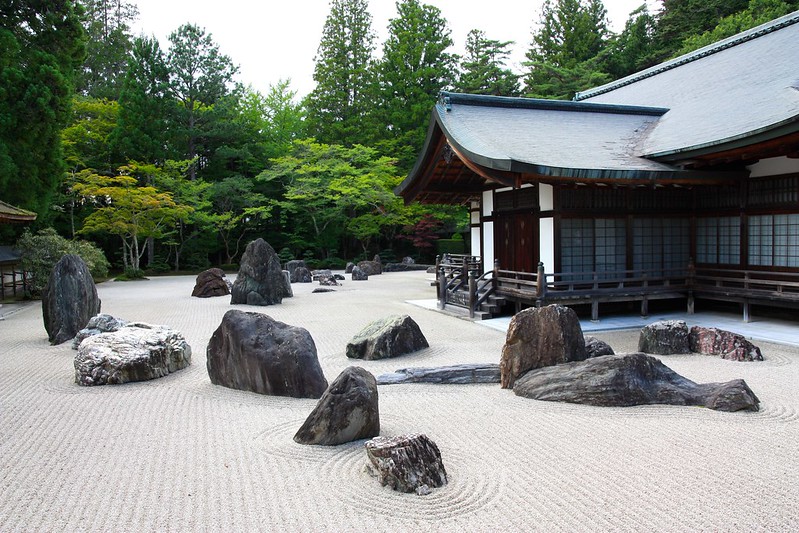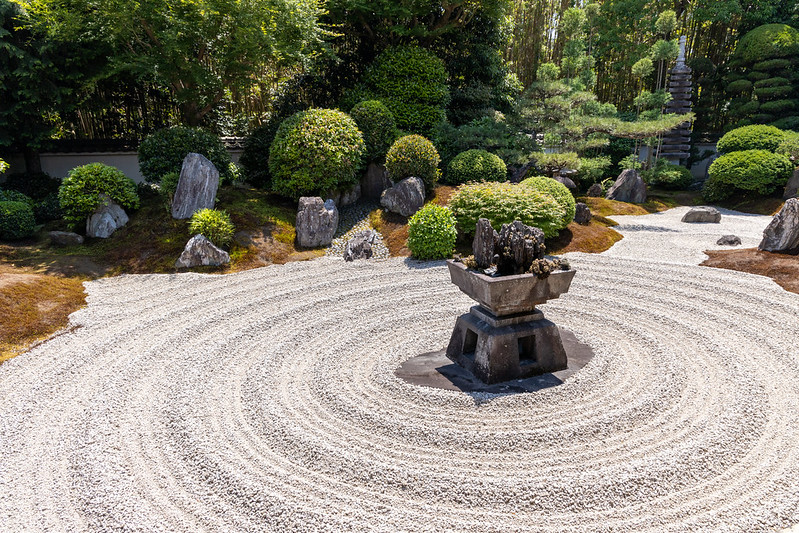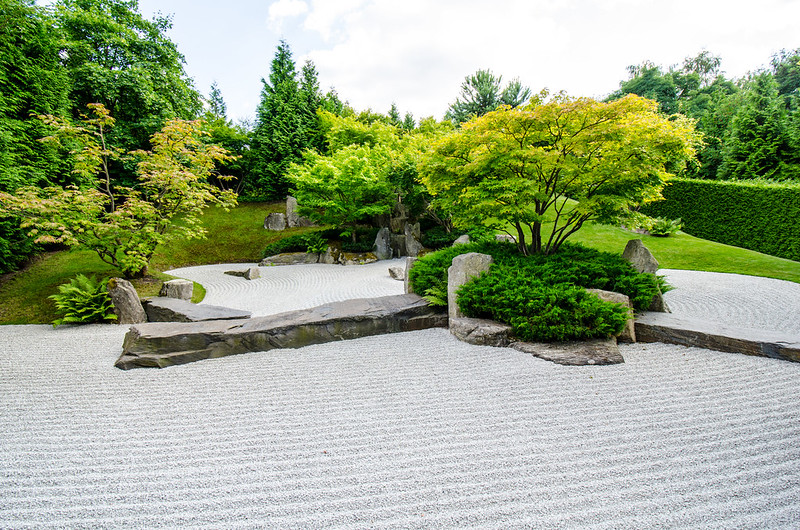
The Serenity of Karesansui: Japanese Rock Garden
Karesansui, or Japanese rock garden, is also called “dry landscape garden” or “zen garden.” Gravel, sand, and rocks are arranged in intricate works of art. Gravel and sand are raked into ripple designs to represent water, and some gardens also have rocks to symbolize Chinese mountains. Some designs also incorporate trees, moss, bushes, and various water features. Karesansui are often enclosed by a wall and made to be viewed from a single perspective, such as from the porch of the hojo (abbot’s quarters in a monastery).
History
Karesansui has carved for itself a niche in Japanese history. This garden style began during the Heian period (784-1185). The first records of Japanese rock gardens were written in the ancient manuscript the Sakuteiki, also known as “Records of Garden Keeping,” and were inspired by Chinese gardens of the Song Dynasty (960-1279).
Karesansui thrived and developed during the Muromachi Period. Zen Buddhism was introduced in Japan and in the 14th and 15th century, with Karesansui designs focused on aspects of meditation. The Kyoto temple gardens, Saihō-ji, Tenryū-ji, and Ginkaku-ji, are well-known karesansui made during that time.
Well-known Karesansui (Kyoto)
The Tenryu-ji temple garden features an actual water pond with a dry rock waterfall that represents a Chinese landscape.
The Ginkaku-ji temple garden has incorporated white sand in its raked patterns. At the center of the garden is a mountain of sand that is said to represent Mount Fuji.
The zen garden at Ryōan-ji temple is probably the most famous. Fifteen stones of various sizes are divided into five groups and placed in a sea of white gravel that is raked by monks each day. This karesansui is one of the first that has a purely abstract design.
Karesansui Landscape Architects
During the Edo Period, huge promenade gardens became favored but zen gardens persisted at zen temples. The more contemporary karesansui gardens are influenced by Mirei Shigemori (1896-1975) and Shunmyo Masumo (1953-). In just the 20th century, Mirei Shigemori’s designs included more vivid colors and shapes. He also made use of concrete, aside from the usual rock and stone. By contrast, Shunmyo Masumo focuses on creating zen gardens with simple abstract designs to encourage perceptions of serenity and simplicity.



